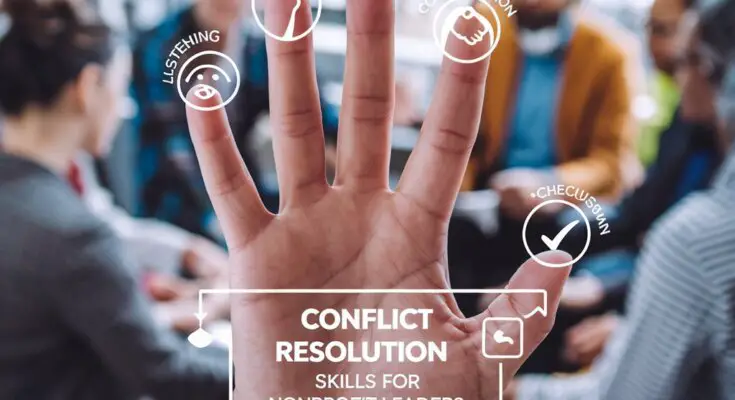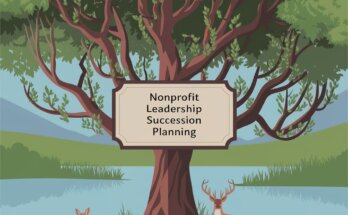In the dynamic world of nonprofit organizations, conflict resolution skills are not just an asset; they are a necessity. Nonprofit leaders often find themselves at the intersection of diverse perspectives, passionate stakeholders, and varying interests.
Understanding how to navigate conflicts effectively can make the difference between a thriving organization and one that struggles to maintain harmony.
In this blog post, we will explore essential conflict resolution skills that nonprofit leaders can adopt to foster a positive and productive environment.
Understanding Conflict in Nonprofits
Before we dive into the strategies, let’s take a moment to understand what conflict looks like in the nonprofit world.
Conflicts can arise from various sources, including:
- Differing values: Team members may have different beliefs about the mission or methods of the organization.
- Resource allocation: Disagreements can occur over how funds should be spent or which programs should receive priority.
- Communication breakdowns: Misunderstandings or a lack of information can lead to conflicts between team members.
For example, imagine a scenario where your nonprofit is planning a new community outreach program. Two team members have contrasting ideas on how to implement it.
One believes in a grassroots approach, while the other prefers a more structured, top-down strategy.
If these differences are not addressed, the team may become divided, leading to frustration and a decline in productivity. This is where conflict resolution skills come into play.
The Importance of Conflict Resolution Skills
Effective conflict resolution skills are vital for several reasons:
- Enhances Collaboration: When conflicts are resolved positively, team members are more likely to collaborate effectively in the future.
- Fosters a Positive Culture: A culture that embraces open dialogue and increased job satisfaction and retention.
- Encourages Innovation: Different perspectives can lead to innovative solutions, provided the conflicts are managed constructively.
Strategy 1: Active Listening
One of the most fundamental conflict resolution skills is active listening. This means fully concentrating on what others are saying and responding thoughtfully.
Practical Example:
Let’s say a team member approaches you with concerns about a new program implementation. Instead of interrupting or making assumptions, practice active listening.
- Nod your head to show you’re engaged.
- Summarize their concerns to ensure understanding. For example, “It sounds like you’re worried that this approach may overlook some community needs. Can you elaborate on that?”
This technique not only validates their feelings but also opens the door for further dialogue.
Strategy 2: Empathy
Empathy is the ability to understand and share the feelings of others. In conflict situations, showing empathy can help de-escalate tensions and foster collaboration.
Practical Example:
Suppose there’s a disagreement between two staff members about project deadlines. Instead of taking sides, you can say, “I understand that both of you are under a lot of pressure. Let’s explore how we can support each other during this busy time.”
This approach acknowledges their feelings and encourages teamwork.
Strategy 3: Establish Common Goals
When conflicts arise, it’s essential to redirect the focus towards common goals. This helps remind everyone of the shared mission and fosters collaboration.
Practical Example:
If two board members are at odds over fundraising strategies, hold a meeting where everyone can discuss their ideas while keeping the nonprofit’s mission in mind.
Start by stating, “We all want to increase our funding to support our community programs. Let’s brainstorm ways to achieve that together.”
This strategy shifts the focus from the conflict to the shared goal, promoting teamwork.
A Story of Transformation
Let me share a story about a nonprofit called “Community Connect.” They were passionate about their mission, but often found themselves in heated debates over program directions.
During one particularly challenging project, team members had conflicting ideas about how to approach community engagement. The director decided to implement a conflict resolution workshop focusing on active listening and empathy.
During the workshop, team members participated in role-playing exercises where they expressed their views while practicing these skills.
After the workshop, the atmosphere within the organization shifted dramatically. Instead of avoiding difficult conversations, staff began to approach conflicts as opportunities for growth.
This new mindset led to innovative programming that improved community outreach and engagement.
Strategy 4: Facilitate Open Communication
Encouraging open communication is vital for preventing conflicts. Creating a culture where team members feel safe to express their thoughts and concerns can significantly reduce misunderstandings.
Practical Example:
Establish regular check-in meetings where team members can share updates and voice concerns. For instance, you might say, “Let’s set aside some time each week to discuss what’s working well and what challenges we’re facing.”
This proactive approach helps prevent conflicts from escalating by addressing issues before they become significant problems.
Strategy 5: Find Common Ground
In any conflict, finding common ground is essential. It allows both parties to see where they agree and helps build a foundation for resolution.
Practical Example:
If two staff members are disagreeing about project priorities, ask them to identify shared objectives. For instance, “What aspects of this project do both of you agree are crucial for our success?”
By focusing on what they both care about, they may find a middle ground that satisfies both parties.
Strategy 6: Stay Calm and Collected
As a leader, it’s important to remain calm during conflicts. Your demeanor can set the tone for the conversation and help de-escalate tensions.
Practical Example:
If a team meeting becomes heated, take a deep breath and say, “Let’s take a step back for a moment. I appreciate everyone’s passion, but we need to focus on resolving this issue constructively.”
By maintaining your composure, you help others feel safe to express their views without fear of escalation.
Strategy 7: Use “I” Statements
Using “I” statements instead of “you” statements can help express feelings without sounding accusatory. This technique fosters a more open dialogue.
Practical Example:
Instead of saying, “You always interrupt me during meetings,” try saying, “I feel frustrated when I’m interrupted because I want to share my ideas.”
This approach encourages others to be more receptive to your feelings without feeling attacked.
Strategy 8: Seek Mediation When Necessary
Sometimes, conflicts cannot be resolved internally. In such cases, seeking outside mediation can provide a neutral perspective.
Practical Example:
If two board members are in a persistent disagreement that hinders progress, consider bringing in a mediator. This person can facilitate discussions and help both parties find a resolution.
You might say, “I think it would be beneficial for us to involve a neutral third party to help us navigate this issue.” This demonstrates a commitment to resolving the conflict constructively.
Strategy 9: Encourage Feedback and Follow Up
After a conflict is resolved, it’s essential to encourage feedback and follow up to ensure that all parties feel heard and satisfied with the outcome.
Practical Example:
After resolving a disagreement, check in with the involved parties. Ask questions like, “How do you feel about the resolution? Is there anything else we can do to improve the situation?”
This shows that you care about their feelings and are committed to fostering a positive work environment.
Strategy 10: Learn and Adapt
Finally, every conflict presents an opportunity for growth. Take time to reflect on what worked and what didn’t in resolving the conflict.
Practical Example:
After a significant conflict, gather the team to discuss lessons learned. Encourage open dialogue by asking, “What can we do differently next time to prevent a similar situation?”
This approach fosters a culture of continuous improvement and helps the team become more resilient.
Conclusion
In the nonprofit sector, conflicts are inevitable. However, with the right conflict resolution skills, leaders can transform potential disputes into opportunities for growth and innovation.
To further enhance your conflict resolution skills and stay updated on expert tips, resources, and exclusive opportunities, subscribe to the Nonprofit Navigators Newsletter.
Join a community dedicated to empowering nonprofit leaders like you, with access to job openings, grant opportunities, webinars, and more. Together, we can navigate the complexities of nonprofit leadership and drive positive change in our communities.
By adopting these strategies, nonprofit leaders can foster a supportive and collaborative environment, ultimately advancing their mission and creating a lasting impact.
Don’t let conflicts derail your organization’s goals—embrace these skills and watch your nonprofit thrive!
I’m Queen Israel Nweke! I help nonprofits thrive by mastering grant writing, strategic funding, and effective nonprofit management, enabling them to secure resources and make a lasting impact in their communities. Interested in any of these services? Contact me at [email protected].
>>>>Recommended Resources>>>>>
- The Small Business’s Guide to Winning Grants
- Request for Proposal Success: How to Write Proposals That Win
- The Ultimate Guide to Federal Grant Applications: Techniques for Success
- Digital Marketing for Nonprofits: A Comprehensive Guide to Boosting Your Impact Online
- Mastering Online Fundraising: A Nonprofit’s Guide to Digital Success




